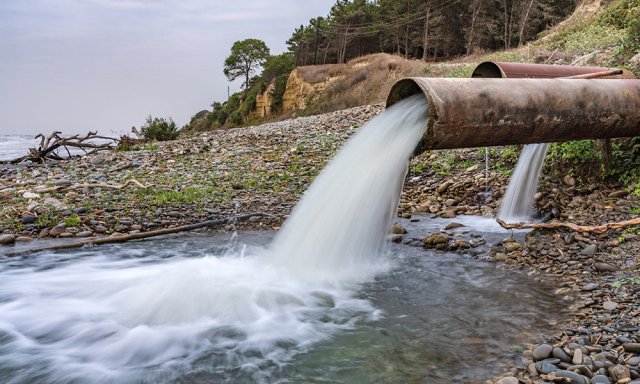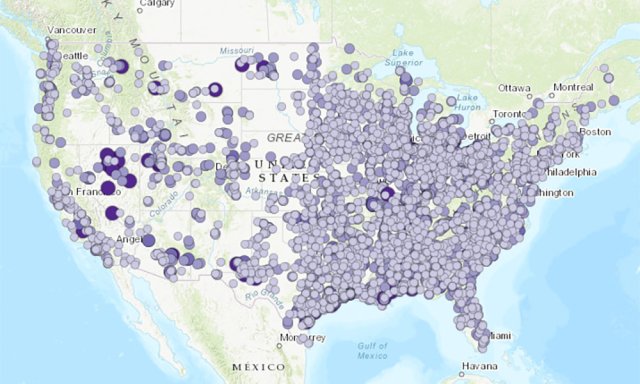TRI National Analysis
U.S. facilities report detailed information to EPA on their management of toxic chemicals, including releases to the environment. The Toxics Release Inventory (TRI) National Analysis interprets this information and examines trends in releases, waste management practices, and pollution prevention (P2) activities.
-
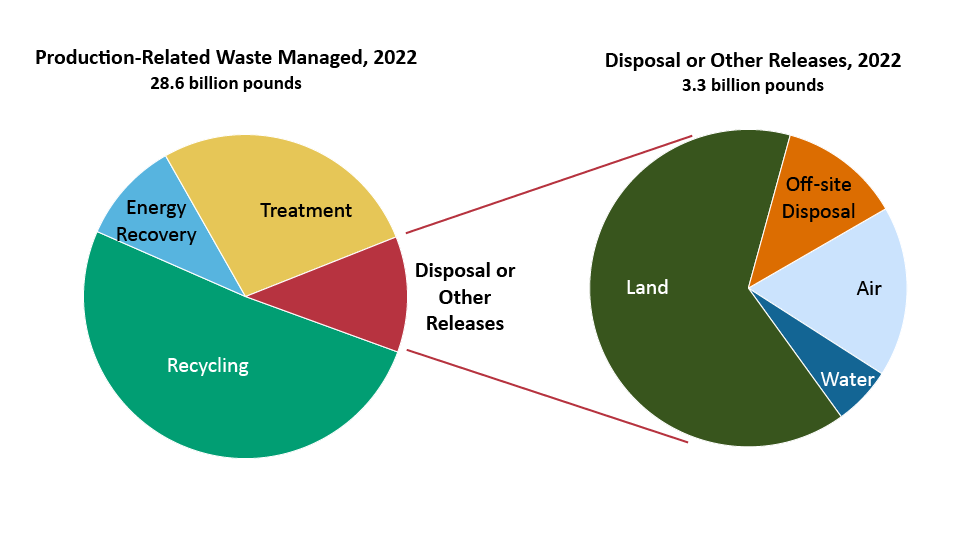
Most waste managed was recycled.
Most of the 29 billion pounds of waste managed at TRI-reporting facilities in 2022 was managed using preferred methods such as recycling, treatment, and burning for energy recovery. Of the quantity that was disposed of or otherwise released, most was disposed of to land. For details, see the Introduction. -
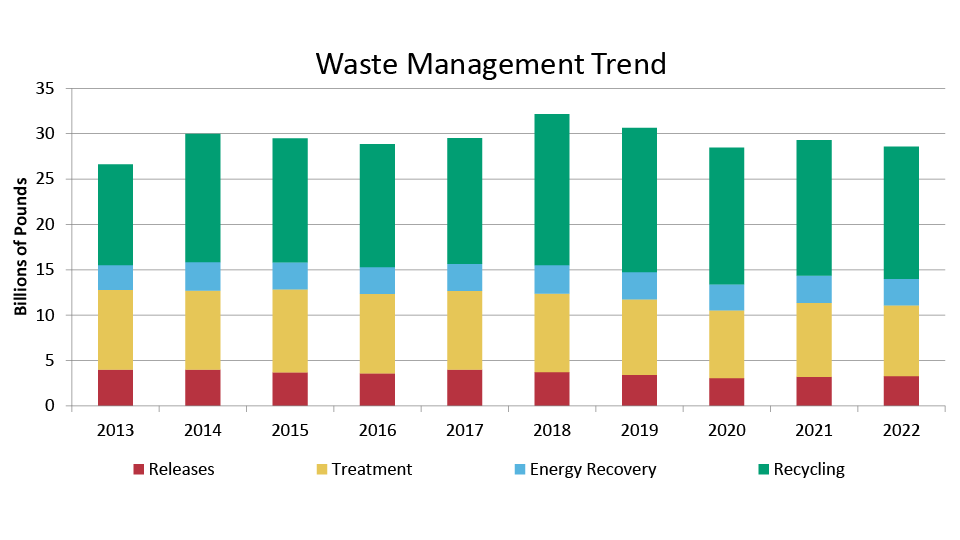
The amount of waste managed has increased.
From 2013 to 2022, the total amount of waste managed at TRI-reporting facilities has increased, driven by increased recycling. The total amount of waste managed at TRI-reporting facilities has declined since 2018. For details, see the Waste Management Section. -
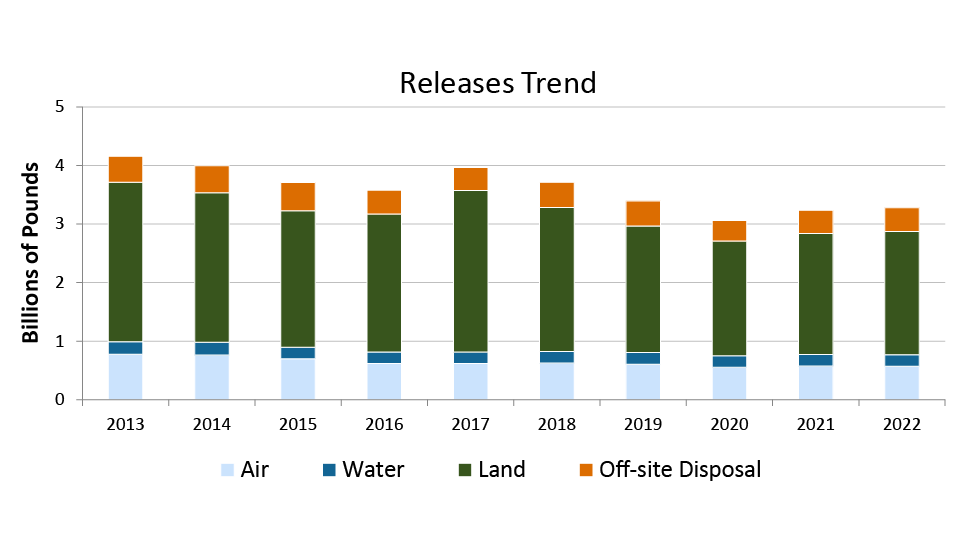
The amount of releases has decreased.
Releases have fluctuated somewhat but decreased overall since 2013, with most releases each year being land releases. For details, see the Releases section.

